Amazing Details of Michelangelo’s David: The Masterpiece’s Intricate Beauty
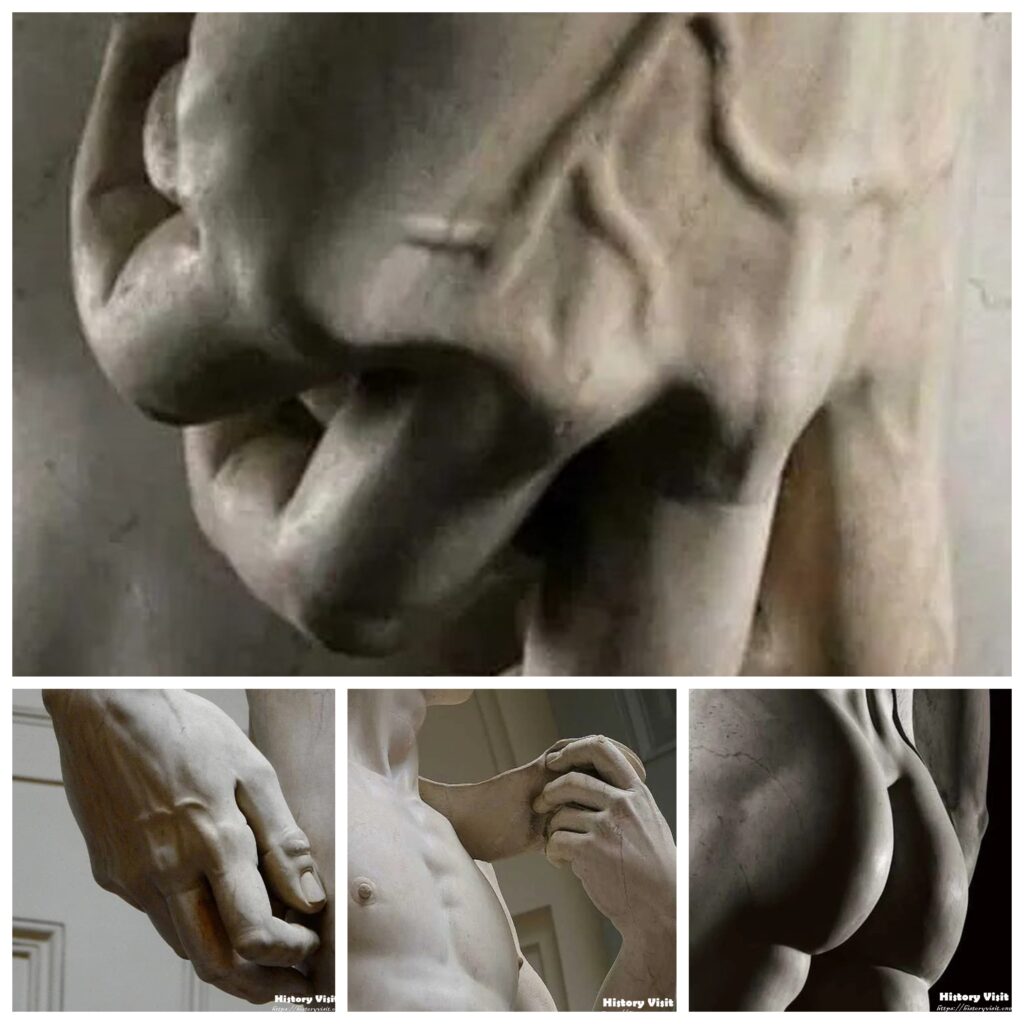
Introduction
Michelangelo Buonarroti, a towering figure of the Renaissance, is celebrated for his unparalleled contributions to art, particularly sculpture. Among his many masterpieces, the statue of David stands out as a symbol of human beauty and artistic perfection. Created between 1501 and 1504, this iconic work embodies the spirit of the Renaissance, capturing the human form with unprecedented realism and emotional depth.
David’s creation was a response to a commission from the Florence Cathedral, intended to be a monumental symbol of the city’s artistic and political prowess. This marble sculpture, standing over 17 feet tall, was not only a testament to Michelangelo’s technical skill but also a bold statement of Florentine identity and pride. Its unveiling marked a pivotal moment in art history, showcasing the potential of human creativity and intellect.
Today, David is housed in the Galleria dell’Accademia in Florence, where it continues to draw millions of admirers from around the world. The statue’s enduring appeal lies in its masterful execution and the profound narrative it conveys, making it a timeless emblem of artistic excellence.
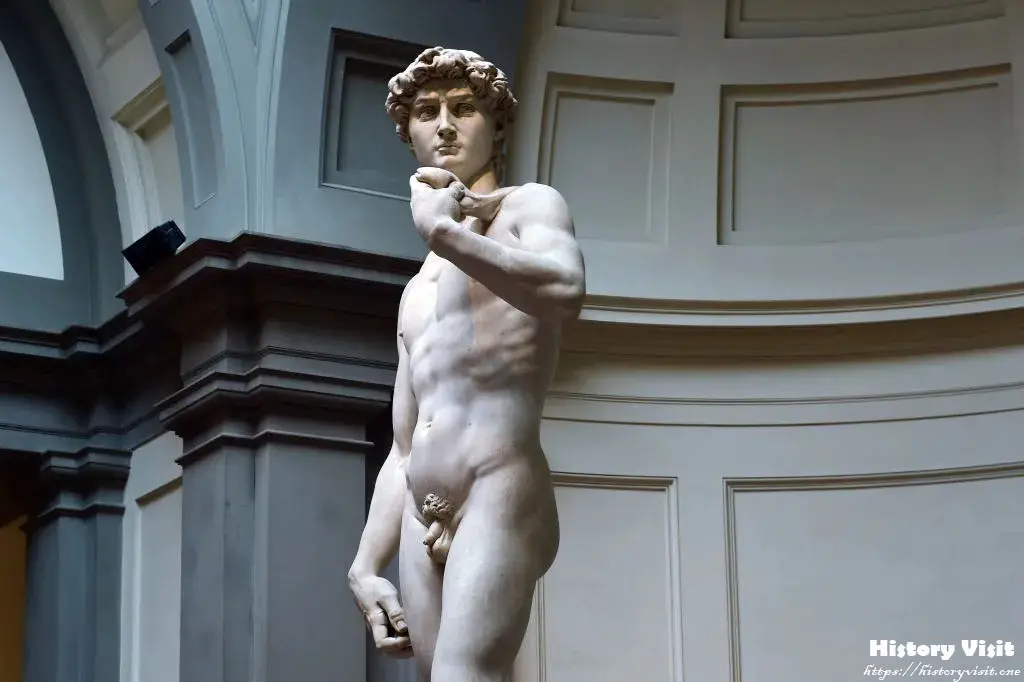
Historical Background
The commission for David was originally conceived by the Florence Cathedral in the early 15th century as part of a series of statues depicting biblical figures. However, it wasn’t until 1501 that Michelangelo, then a rising star in the art world, was selected to bring this vision to life. Given a massive block of Carrara marble, Michelangelo took on the daunting task with both confidence and innovative vision.
Upon its completion in 1504, David was initially placed in the Piazza della Signoria, outside the Palazzo Vecchio, instead of its intended location atop the cathedral. This decision underscored its importance as a civic symbol rather than just a religious one. The statue’s public unveiling was a momentous event, drawing admiration for its grandeur and the lifelike quality of its form.
Over time, concerns about weathering and vandalism led to the statue’s relocation to the Galleria dell’Accademia in 1873, where it has since been preserved and displayed. This move ensured that David would be protected from the elements and could be appreciated up close by future generations, solidifying its status as a masterpiece of Renaissance art.
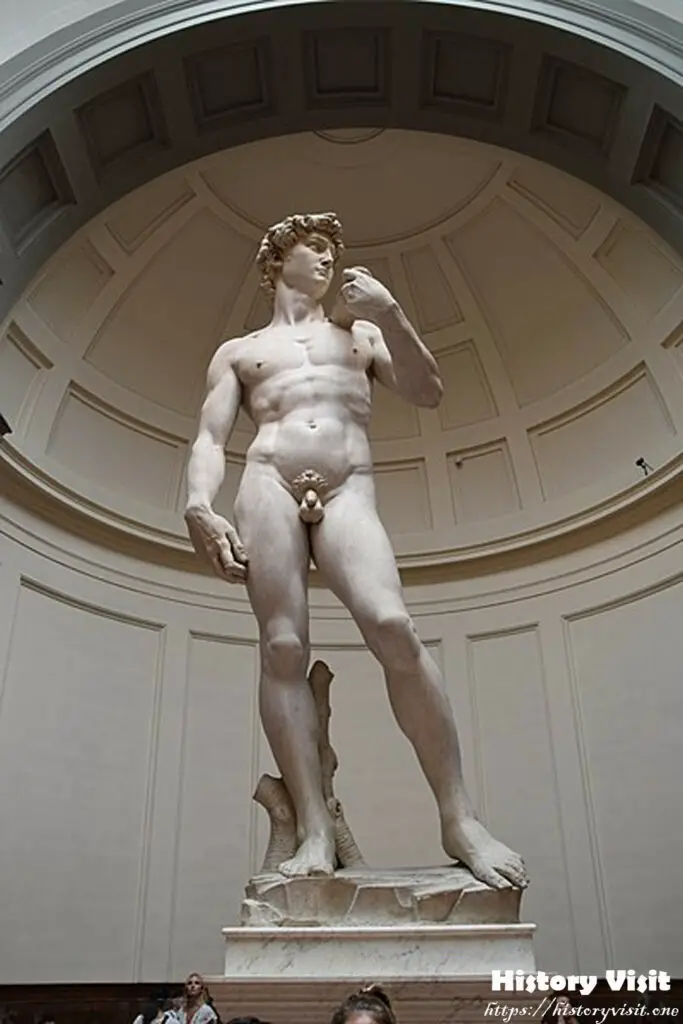
Artistic Analysis
Michelangelo’s David is a paragon of artistic mastery, capturing the youthful hero at a moment of poised anticipation. The statue stands at a towering 17 feet, its proportions meticulously crafted to embody both physical perfection and dynamic tension. David’s contrapposto stance, with weight shifted onto one leg, gives the figure a sense of movement and naturalism that was revolutionary for its time.
The marble used for David, sourced from the quarries of Carrara, is renowned for its quality and purity. Michelangelo’s expert carving techniques brought this stone to life, with intricate details like the veins in David’s hands and the furrowed brow enhancing the statue’s realism. The artist’s ability to convey texture and anatomy with such precision set new standards in sculpture.
Innovations in the depiction of human anatomy are evident throughout the statue. Michelangelo’s deep understanding of the human form is showcased in the accurate muscle definition and the lifelike representation of the body under tension. This anatomical accuracy, combined with the expressive facial features, creates a powerful image of both physical and psychological readiness.
Details of Michelangelo’s David
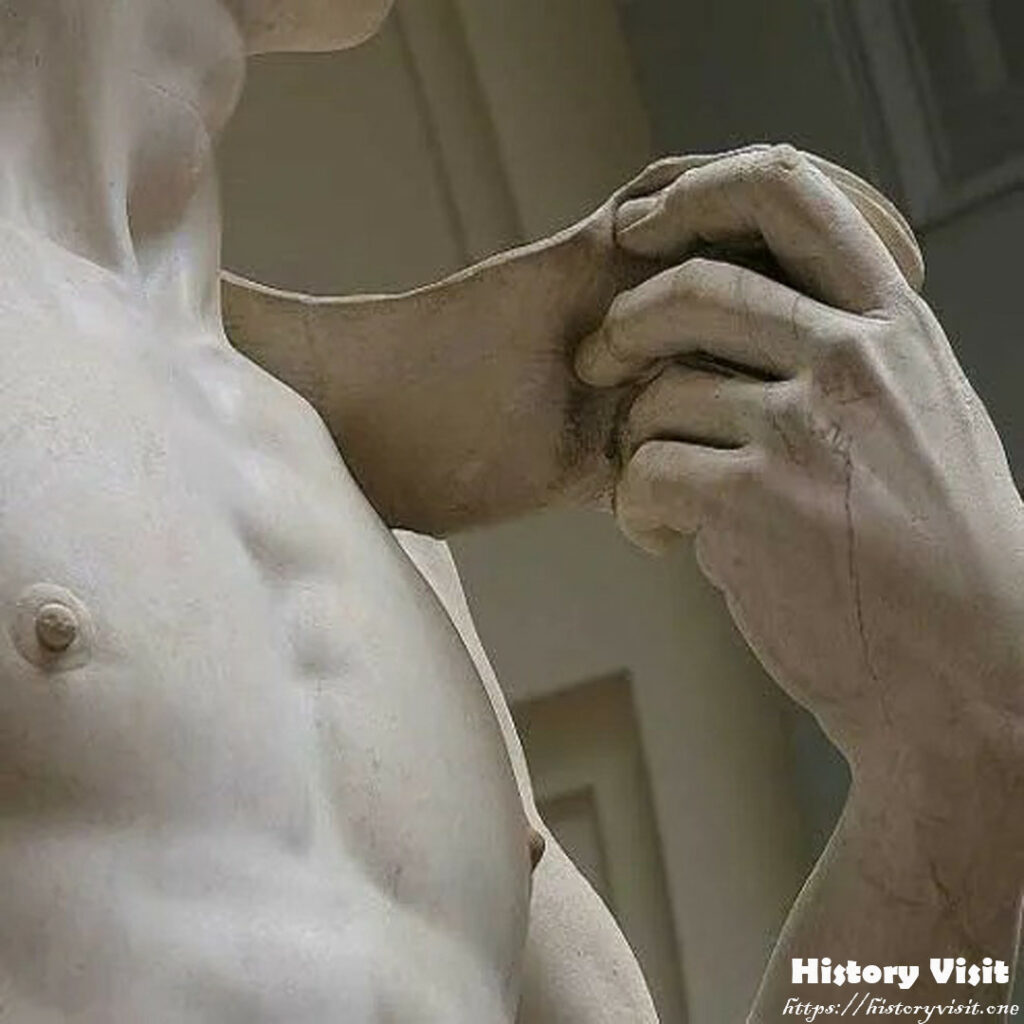
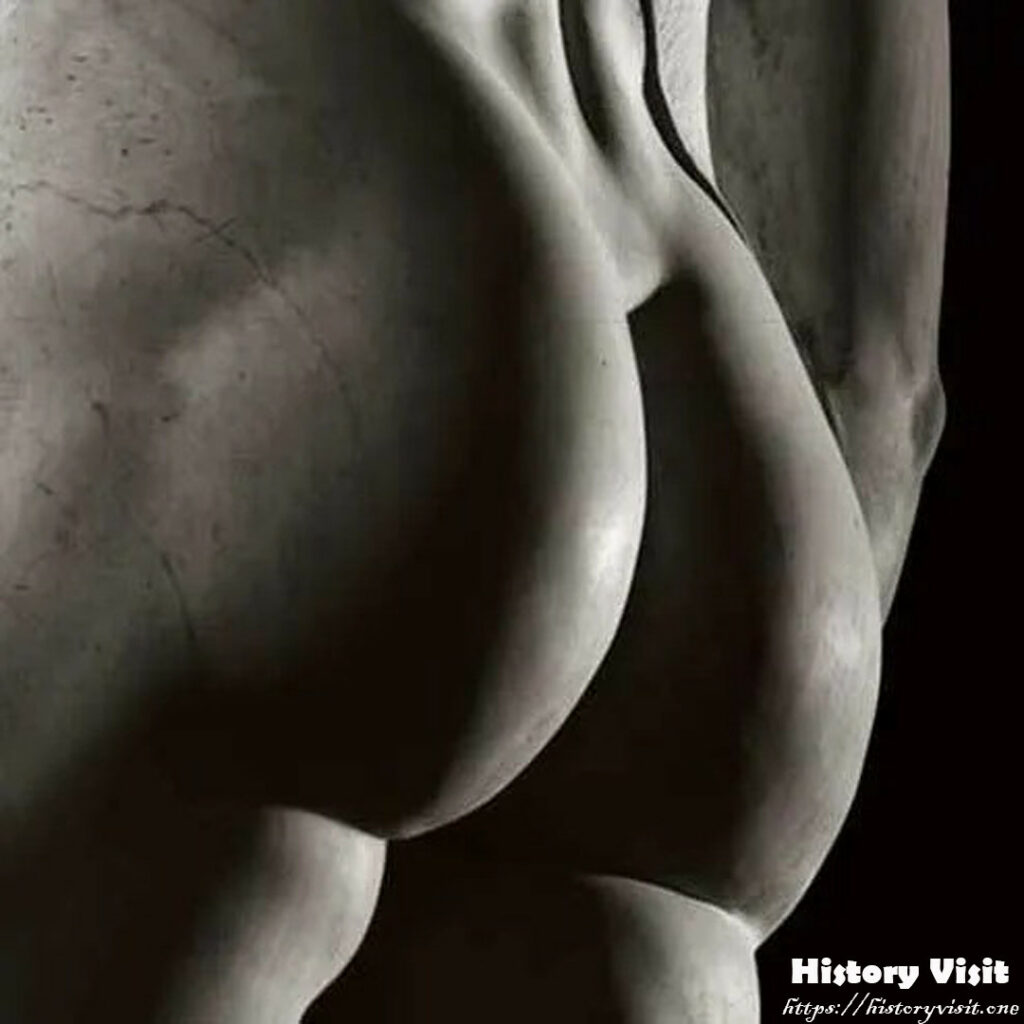
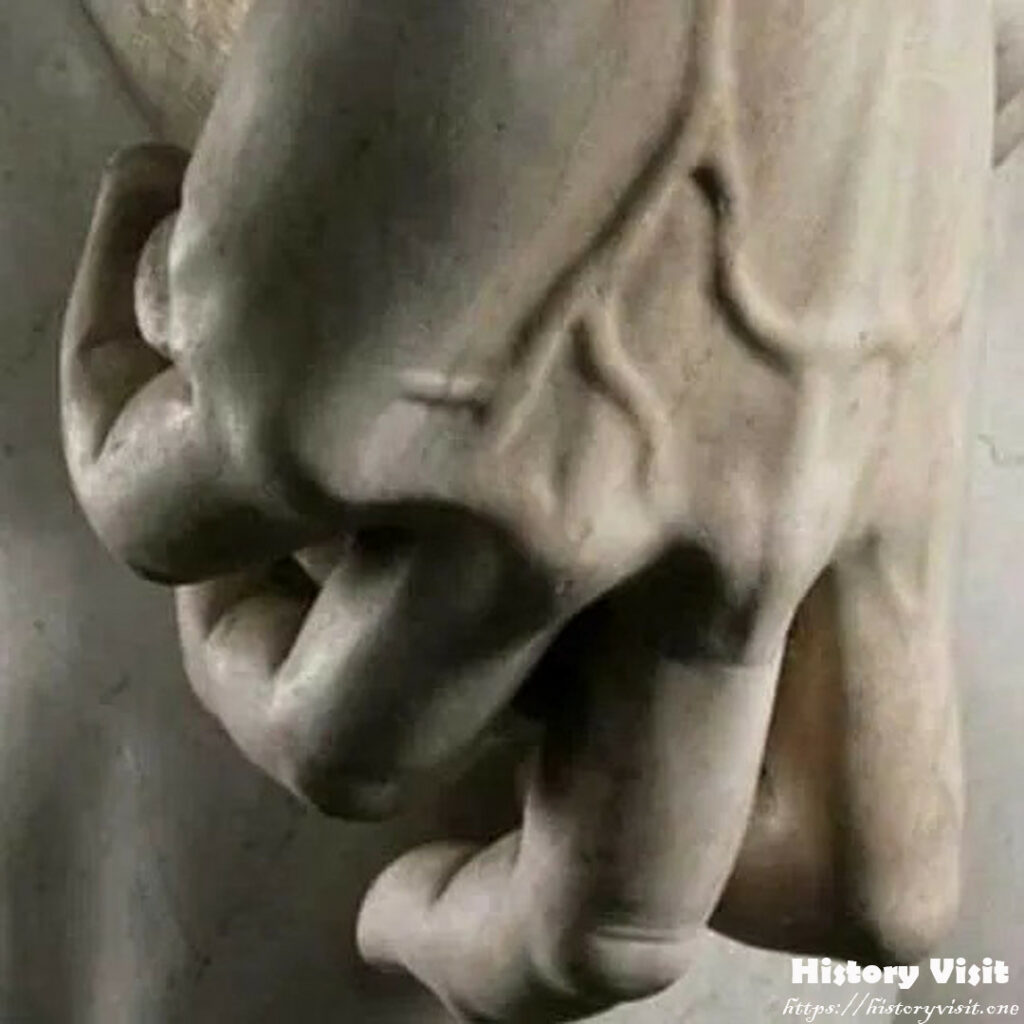

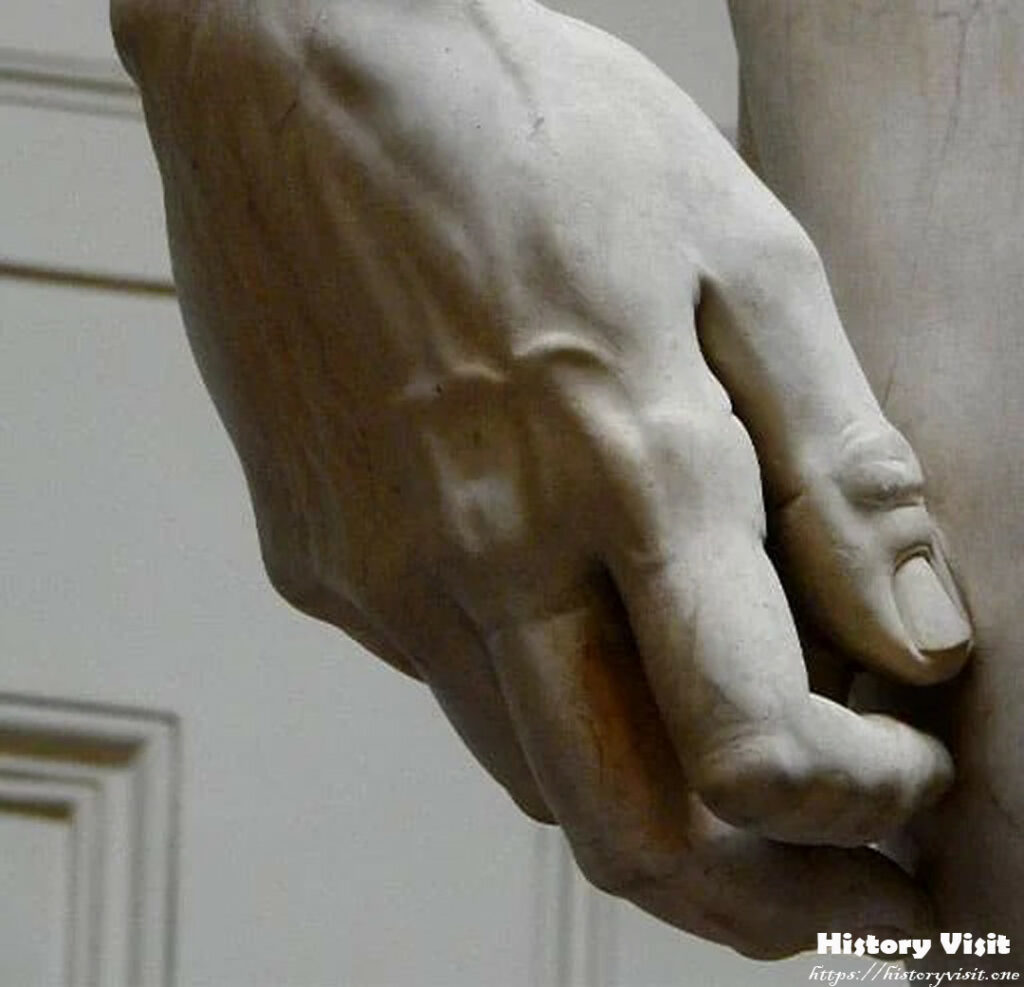

Symbolism and Interpretation
David is not merely a depiction of a biblical hero; it is a symbol deeply rooted in Florentine culture and values. Representing the young shepherd who defeated the giant Goliath, David epitomizes courage, intelligence, and faith. For the citizens of Florence, he was a metaphor for their own resilience and ingenuity in overcoming larger, more powerful adversaries.
The statue’s placement in the public square reinforced its role as a civic icon. It stood as a reminder of the city’s republican values and its resistance against tyranny. The choice of David, a seemingly ordinary youth who rises to greatness, resonated with the Florentines’ own self-image as a small but formidable republic surrounded by larger powers.
Symbolically, David’s nudity is also significant. It harkens back to classical antiquity, celebrating the human body as a vessel of divine beauty and strength. This classical ideal, combined with the spiritual significance of the biblical narrative, bridges the gap between humanism and Christianity, reflecting the complex cultural milieu of the Renaissance.

Details of Michelangelo’s David
Impact and Legacy
David’s influence on the art world is immeasurable. As a quintessential example of Renaissance sculpture, it set a benchmark for artistic excellence and inspired countless artists. Michelangelo’s innovative approach to depicting the human form and his mastery of marble carving techniques influenced not only his contemporaries but also generations of artists that followed.
The cultural significance of David extends beyond its artistic impact. The statue has become an enduring symbol of Florence itself, embodying the city’s historical identity and its contributions to art and culture. Its presence in Florence continues to attract scholars, artists, and tourists, reinforcing the city’s status as a global cultural hub.
In contemporary times, David’s legacy persists through various mediums and interpretations. It has been reproduced, referenced, and parodied in numerous forms, from replicas in other cities to its influence on modern art and popular culture. This ongoing relevance highlights the timeless nature of Michelangelo’s masterpiece and its ability to transcend historical and geographical boundaries.

Details of Michelangelo’s David
Preservation and Conservation
Over the centuries, David has faced numerous challenges related to preservation. Exposure to the elements while it stood in the Piazza della Signoria led to significant weathering and damage. Early conservation efforts were undertaken to address these issues, including the removal of accumulated dirt and the repair of structural weaknesses.
In the 19th century, the decision to move David indoors was a crucial step in its preservation. The Galleria dell’Accademia provided a controlled environment, protecting the statue from further environmental damage. This relocation allowed conservators to conduct more comprehensive restoration work, ensuring the statue’s long-term stability and integrity.
Recent conservation efforts have focused on maintaining the statue’s condition using modern techniques. Advanced imaging technologies and non-invasive methods have been employed to monitor the statue’s structural health and address any emerging issues. These ongoing efforts reflect the dedication to preserving David for future generations, recognizing its irreplaceable value to art and culture.
Conclusion
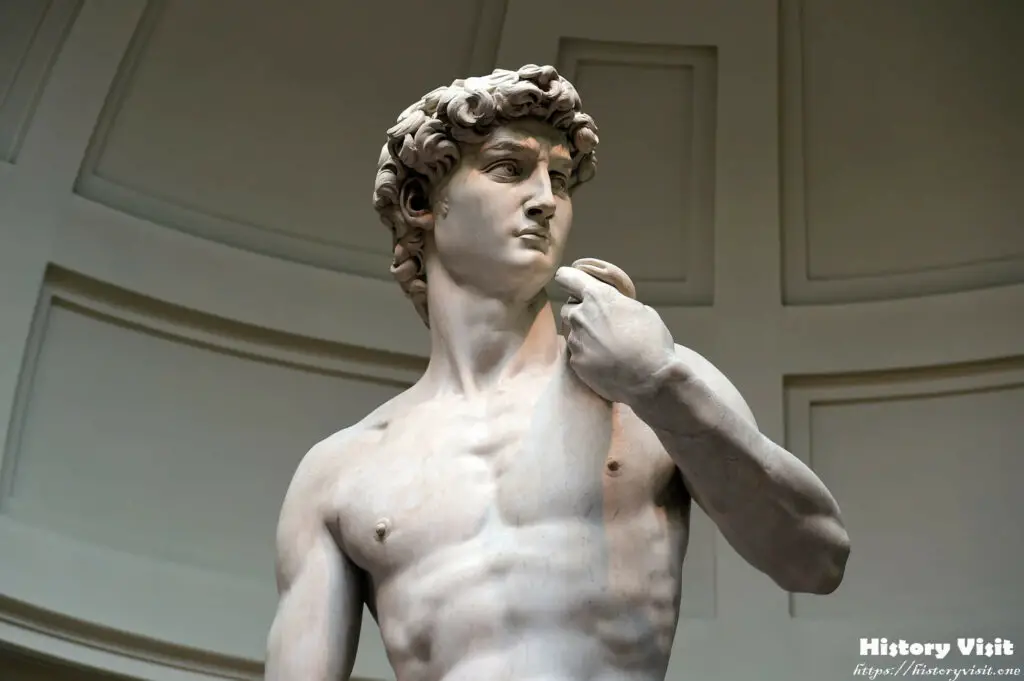
Details of Michelangelo’s David
Michelangelo’s David is more than a masterpiece of Renaissance sculpture; it is a symbol of human potential and artistic genius. Its creation marked a defining moment in art history, showcasing Michelangelo’s unparalleled skill and his ability to convey complex themes through marble. David’s enduring legacy lies in its perfect fusion of artistic innovation and cultural symbolism.
The statue’s impact on the art world and its continued relevance in contemporary culture underscore its significance. As a representation of strength, beauty, and civic pride, David resonates with audiences across time and place. It stands as a testament to the enduring power of art to inspire, challenge, and transform.
In reflecting on David, we are reminded of the profound capabilities of human creativity and the timeless nature of great art. Michelangelo’s achievement with David continues to captivate and inspire, solidifying its place as one of the greatest sculptures ever created.


